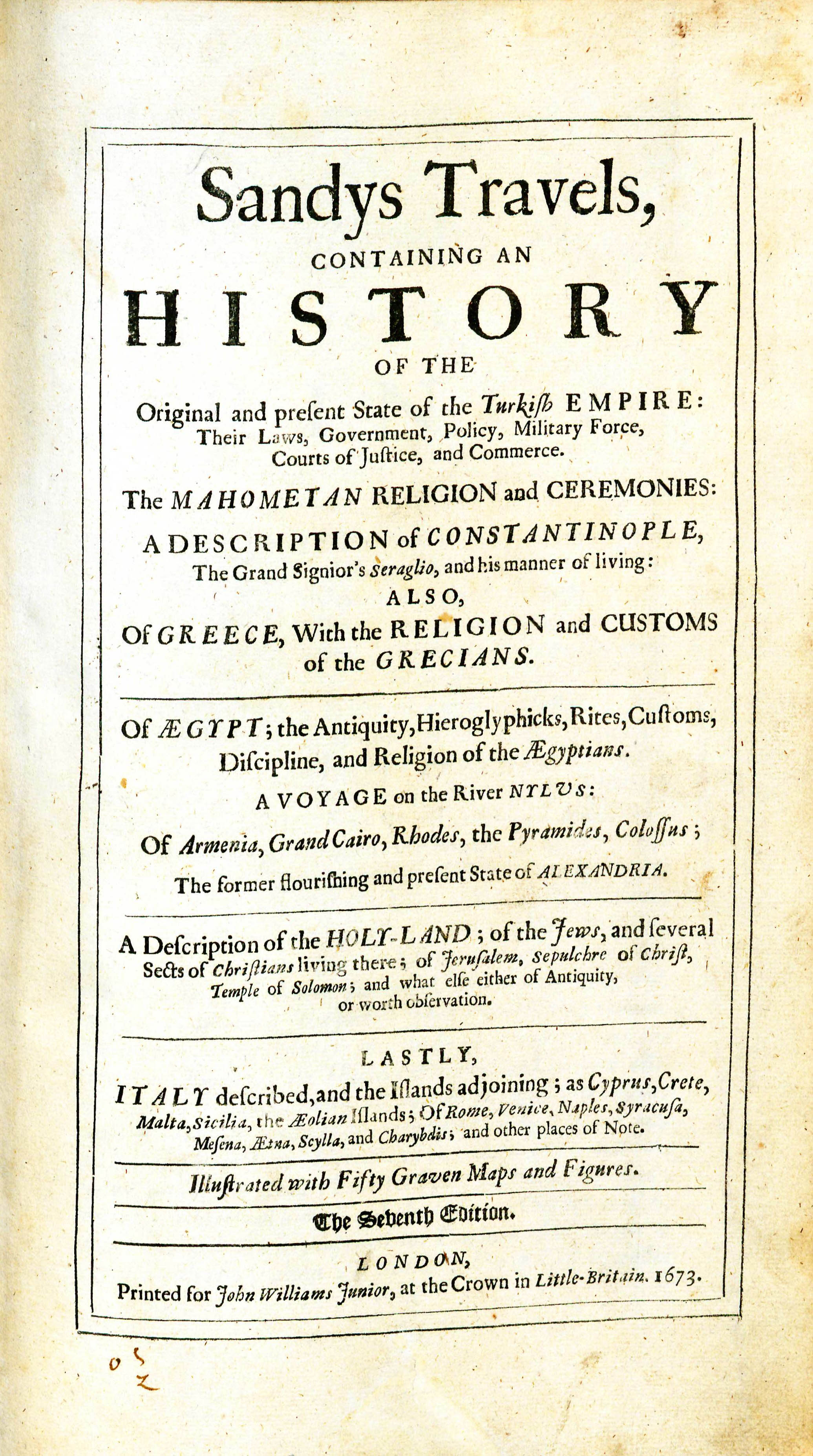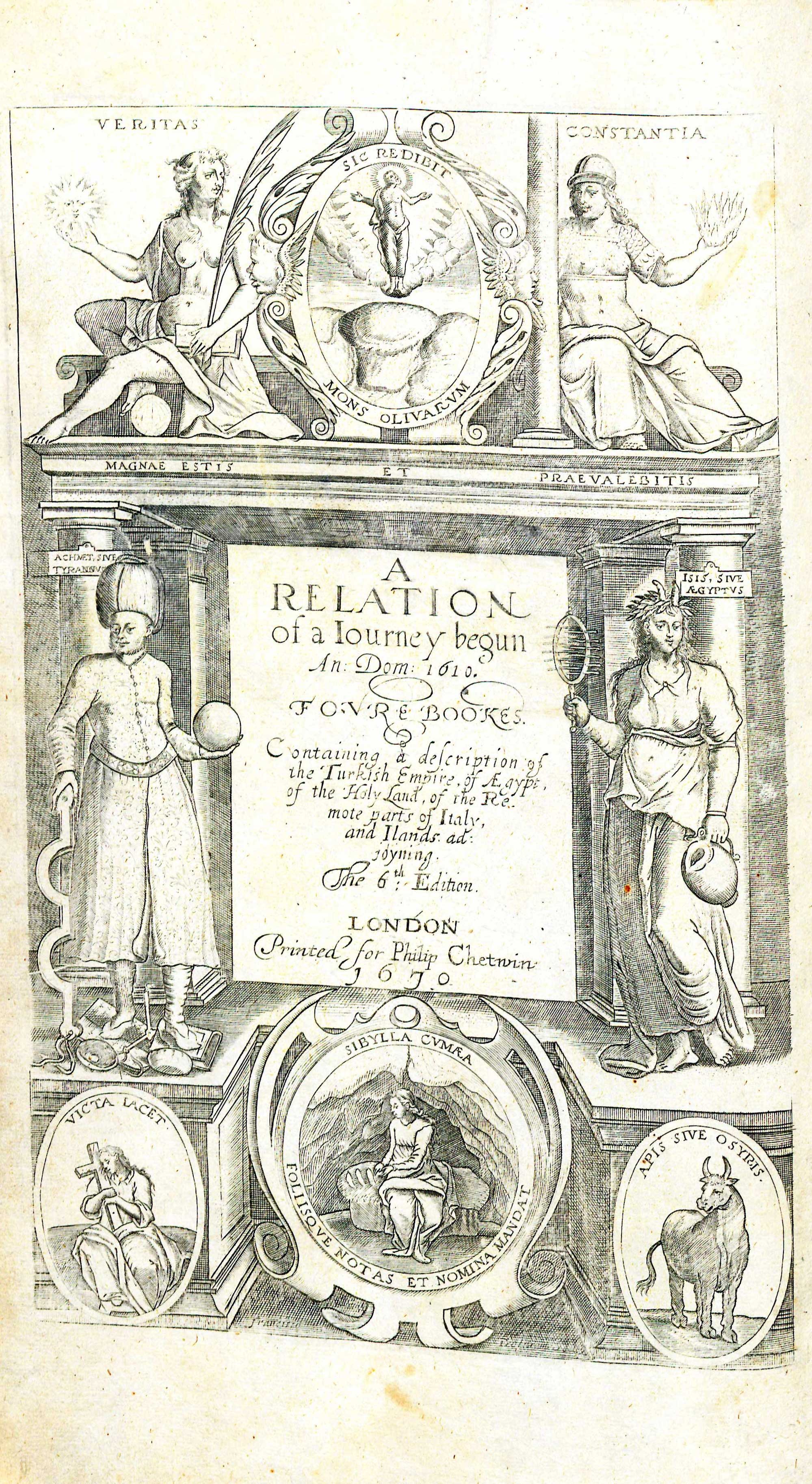Sandys Travels, Containing an History of the Original and Present State of the Turkish Empire ... the Mahometan Religion and Ceremonies: a Description Of Constantinople ... Also, of Greece ... of Aegypt ... a Voyage on the River Nylvs ... a Description of the Holy-Land; of the Jews ... and What Else Either of Antiquity, or Worth Observation. Lastly, Italy Described, and the Islands Adjoining ... Illustrated with Fifty Graven Maps and Figures
by George Sandys
| Sandys Travels | |
|
Title page from Sandys Travels, George Wythe Collection, Wolf Law Library, College of William & Mary. | |
| Author | George Sandys |
| Published | London: Printed for J. Williams, Junior |
| Date | 1673 |
| Edition | Seventh |
| Language | English |
| Pages | 3, 240 |
| Desc. | Folio (31 cm.) |
| Location | Shelf B-5 |
George Sandys (1578 – 1644), a writer and official in colonial Virginia, was an Oxford educated man whose interests lay in poetry and traveling.[1] His English translation of Ovid's epic poem Metamorphoses featured the heroic couplet form, a style that would become Sandys' signature.[2] Instead of graduating from Oxford, Sandys opted to travel from France to Egypt and Turkey, documenting his experiences and encounters. He dedicated his works to Prince (later King) Charles. Sandy's Travels is an account of the author's travels through Turkey and the Middle East, and offered a window into a world foreign to many of the intellectuals who read Sandys, including Francis Bacon, Robert Burton, and John Milton.[3]
Appointed first treasurer of Virginia and a member of the council of state in Virginia, Sandys embarked for America and arrived in Jamestown in October, 1621.[4] Sandys remained in the colonies until 1625 as a member of Virginia Governor Sir Francis Wyatt's council, bringing accounts of his experiences in Eastern Europe and the Middle East to a new audience.[5] A plaque to his memory adorns the side of the chapel on Jamestown Island.
Evidence for Inclusion in Wythe's Library
Listed in the Jefferson Inventory of Wythe's Library as "Sandy's travels. fol." This was one of the titles kept by Thomas Jefferson and later sold to the Library of Congress in 1815. Both the Brown Bibliography[6] and George Wythe's Library[7] on LibraryThing include the 1673 (7th) edition based on Millicent Sowerby's entry in Catalogue of the Library of Thomas Jefferson.[8] Although the volume no longer exists to verify the edition, the Wolf Law Library's George Wythe Collection does include the edition recommended by Sowerby.
Description of the Wolf Law Library's copy
Bound in modern half calf in the seventeenth century style. Purchased from Liberia Antiquaria Piemontese. Images of the library's copy of this book are available on Flickr. View the record for this book in William & Mary's online catalog.
Full text


